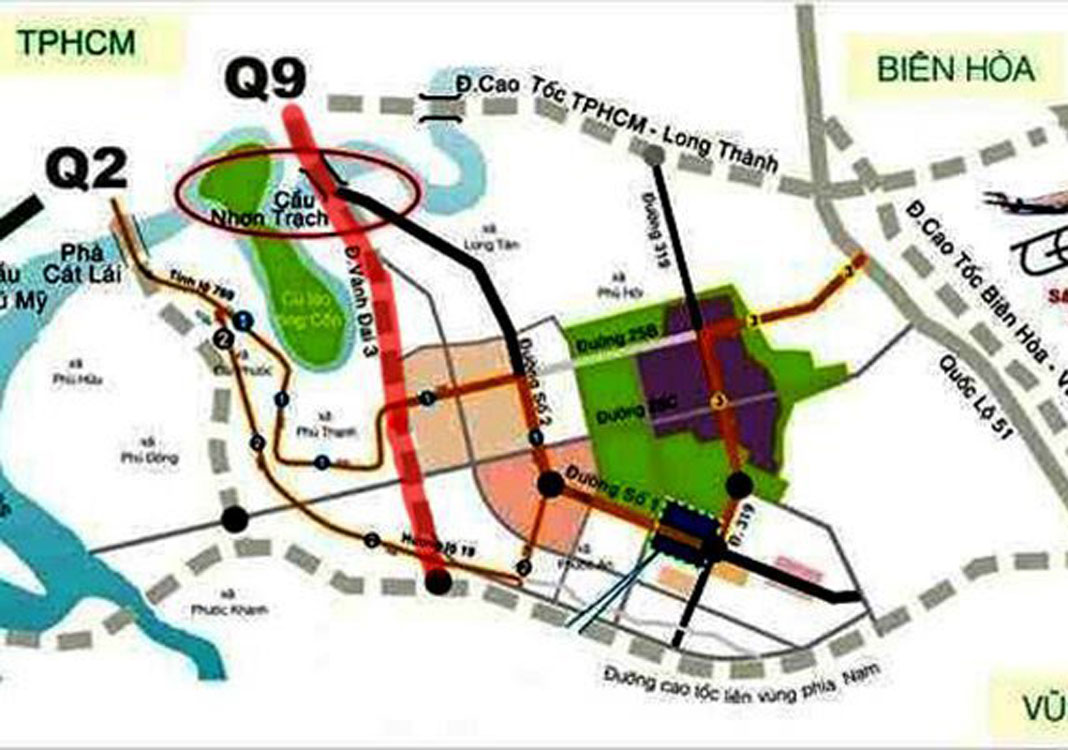HCMC – Three half-done sections of the Ring Road No. 3 project in HCMC, which have a total length of 65 kilometers and require an estimated VND31 trillion (US$1.3 billion), have been proposed to be completed in the 2021-2025 period.
Cuu Long Corporation for Investment Development and Project Management of Infrastructure, or Cuu Long CIPM, has sent the Ministry of Transport the prefeasibility study for the three sections, the local media reported.
This was done after the prime minister directed the Ministry of Transport to submit the report for the incomplete sections of the project to the Government and the National Assembly to add them to the medium-term public investment plans for the 2021-2025 period.
Ring Road No. 3 was designed to be over 90 kilometers long with four sections: Tan Van-Binh Chuan, Tan Van-Nhon Trach, Binh Chuan-National Highway 22 and National Highway 22-Ben Luc.
Of these, the Tan Van-Binh Chuan section is 16 kilometers long and has been opened to traffic.
The Tan Van-Nhon Trach section has two components, with the first consisting of two segments: the 8.7-kilometer 1A segment from provincial road 25B in Nhon Trach District of Dong Nai Province to the HCMC-Long Thanh-Dau Giay Expressway in HCMC and the nine-kilometer 1B segment from the expressway to an intersection with Hanoi Highway. The total investment in the component is estimated at some VND9.3 trillion.
The second component of the Tan Van-Nhon Trach section also includes two segments: the five-kilometer 2A segment from Ben Luc-Long Thanh Expressway to provincial road 25B and the 11-kilometer 2B segment from the Le Van Viet intersection in HCMC’s District 9 to the My Phuoc-Tan Van Road in Binh Duong Province. The component requires an investment of nearly VND6.7 trillion, including US$125 million being proposed to be sourced from South Korea’s Economic Development Cooperation Fund (EDCF) and the remaining from the Vietnamese Government’s reciprocal capital.
In the first phase, the two segments of the second component will be 13-20.5 meters wide with four lanes. They will be widened to 54.5-74.5 meters with eight lanes in the second phase.
The third section stretching from Binh Chuan to National Highway 22 in HCMC has a length of 19 kilometers and requires an investment of more than VND11.7 trillion. Cuu Long CIPM has proposed borrowing more than US$234 million from EDCF and sourcing US$270 million from the Vietnamese Government as reciprocal capital.
The section will start at Thuan An City of Binh Duong Province and end at National Highway 22. The section will have a width of 24.5 meters and four lanes in the first phase and be 67-74 meters wide and have six to eight lanes in the second phase.
The last section, 29 kilometers, will connect National Highway 22 and Long An’s Ben Luc District and cost some VND12.6 trillion, with US$309 million being proposed to be sourced from the Asian Development Bank’s official development assistance loans and US$215 million from the Vietnamese Government’s reciprocal capital.
The section will be 24.5 meters wide with four lanes in the first phase and 67 meters wide with six lanes in the second phase.
On October 27, Cuu Long CIPM proposed merging the second component of the Tan Van-Nhon Trach, Binh Chuan-National Highway 22 and National Highway 22-Ben Luc sections into the closed Ring Road No. 3 project.
Ring Road No. 3 is a key national project which helps boost the regional connection and the socioeconomic development in HCMC and the southern key economic zone as a whole and ease traffic in the downtown area of HCMC and connect with Ba Ria-Vung Tau, Binh Duong, Binh Phuoc, Long An, Dong Nai and Tay Ninh provinces.
In addition to Ring Road No. 3, the HCMC government in June proposed the Ministry of Transport execute the 200-kilometer Ring Road No. 4 project passing through Ba Ria-Vung Tau, Binh Duong, Dong Nai and HCMC with an estimated investment of around VND99 trillion.
The two ring road projects were passed nearly a decade ago but have yet to be completed, affecting the socioeconomic development in HCMC and the southern key economic zone.









